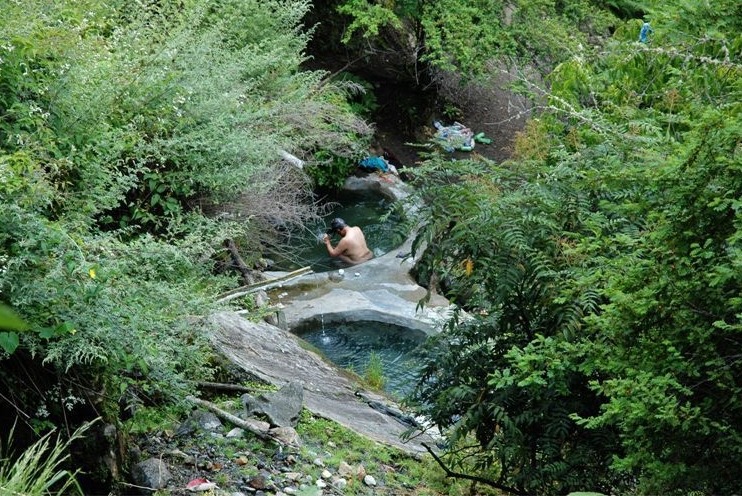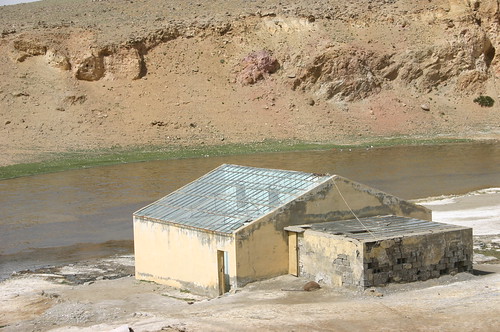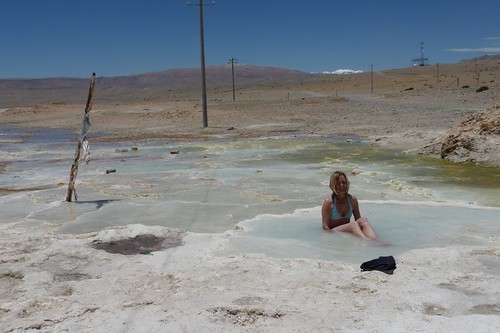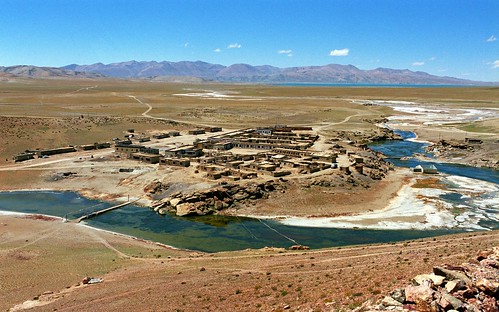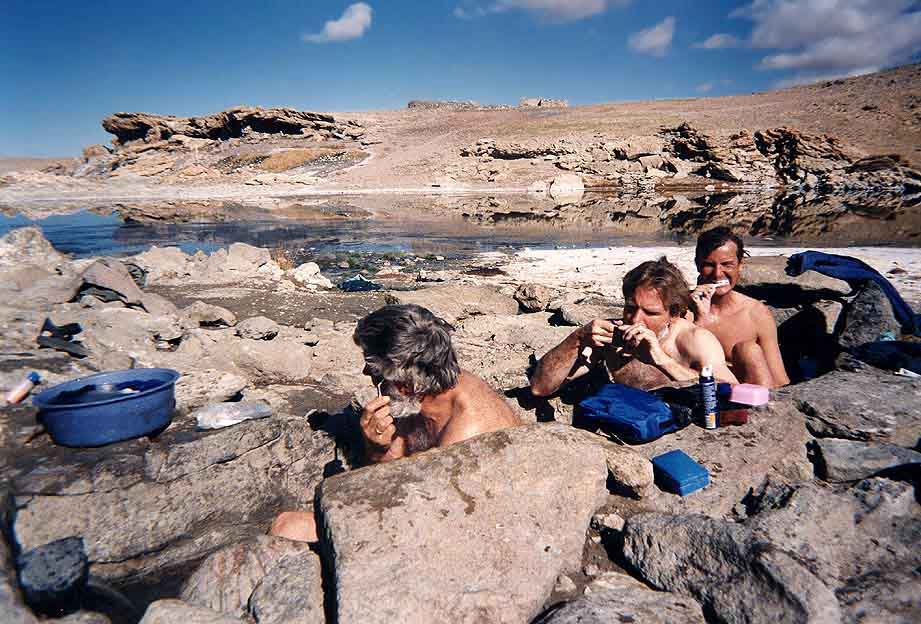Qamdo or Chamdo?
While working my way through Tibet's hot springs, the final prefecture of Tibet Autonomous Region to be featured is that of Qamdo. Qamdo is the term I'll use. I've tried to maintain all names as those that are used in Wikipedia, though even on this they say it's Qamdo, though the accompanying map says Chamdo! So much for being correct.
Staring
There is this reference to there being a few [hot?] springs in and around qamdo, but considered the most famous in Qamdo is the hot spring of Yiri:
Finally
While working my way through Tibet's hot springs, the final prefecture of Tibet Autonomous Region to be featured is that of Qamdo. Qamdo is the term I'll use. I've tried to maintain all names as those that are used in Wikipedia, though even on this they say it's Qamdo, though the accompanying map says Chamdo! So much for being correct.
Staring
There is this reference to there being a few [hot?] springs in and around qamdo, but considered the most famous in Qamdo is the hot spring of Yiri:
'The hot spring in Yiri of Riwoqe [county] was famous throughout the world for its curative effect hundreds of years ago'.A feature describes the springs as follows:
'The hot springs are distributed along a narrow zone of 100 meters, and six of the springs are serviceable with a water temperature 20-40℃. Because the water has an obvious curative effect on some diseases, it is greatly favored by those who suffer from rheumatic arthritis, bone fracture, semi-paralysis, calcium deficiencies and skin disease'.Daniel Winkler has an extensive report on Yiri hot spring(s). Though part of the reason for going there was to observe the potential of it's hot springs he somehow forgets to report what that potential is / was:
'Once in Yiri (3800m) [after a six hour 95 km drive] we were housed in the newly built hot spring guest house located below the springs. The 43°C hot water wells up on both sides of a creek, which at this point undercuts a 200m cliff of vertical limestone. The only drawback to enjoying the springs was that I was permanently stared at by dozens of friendly people'.Elsewhere Daniel expands (and puts up a photo):
'There are eight different springs, two of them used for bathing, all of them have their specific medicinal propensities. The main spring itself is contained in a bathhouse. It is supposed to cure 404 sicknesses. Somebody had a lot of time counting possible ailments'.
One of the springs (source).
Where?
Baxoi county entertains the Xali (Xiali) hot springs.
Elsewhere in the same county is Ra'og hot spring (1). At least that's what that source describes which is backed up by Tibetravelplanner.com. That's not to say that it may well be in Riwoqe county ...
Somewhat different is the hot spring of Qennyi which is a cave hot spring. The source puts it as located in Gyamda county which some how does not seem to be part of Qamdo. However it is also backed up by this German language publication. That said, it may well refer to Gongbo'gyamda county but that is in Nyinchi prefecture ...
Possibly Jomda is meant? Qu'nyido hot spring could be meant, which lies in Jomda county (1).
In Dengqen county Tocun hot spring exists.
Salty
Yanjing village of Markam county is re-known for it's salt production. The salt can be won by drying brine water welling up from salt water springs. Unclear whether or not these springs provide warm water. A great overview of how this is done can be found here.
Nearby though is Quzeka (Qoizeka) hot spring:
account
Funny though how DancingMango comments on this existence of a brothel here whereas this site comments on
Jessnel delves on the hot spring etiquette here, though not revealing much:
Baxoi county entertains the Xali (Xiali) hot springs.
Elsewhere in the same county is Ra'og hot spring (1). At least that's what that source describes which is backed up by Tibetravelplanner.com. That's not to say that it may well be in Riwoqe county ...
Somewhat different is the hot spring of Qennyi which is a cave hot spring. The source puts it as located in Gyamda county which some how does not seem to be part of Qamdo. However it is also backed up by this German language publication. That said, it may well refer to Gongbo'gyamda county but that is in Nyinchi prefecture ...
Possibly Jomda is meant? Qu'nyido hot spring could be meant, which lies in Jomda county (1).
In Dengqen county Tocun hot spring exists.
Salty
Yanjing village of Markam county is re-known for it's salt production. The salt can be won by drying brine water welling up from salt water springs. Unclear whether or not these springs provide warm water. A great overview of how this is done can be found here.
A Han tourist enjoys himself in a hot-spring pool beside the Lancangjiang river at a resort in#Tibet #China #曲孜卡 #温泉 #盐井 #芒康 #TheChangingTibet
The above shot refers to Markam county, doesn't look too bad. But not the salt springs ..., source
Nearby though is Quzeka (Qoizeka) hot spring:
Our work group stayed in Quzeka Village by the Lancang River [Mekong], about 10 kilometers away from Yanjing. It has abundant hot spring resources ?reputedly 108 springs whose temperatures range from 20 to 80 degrees centigrade. The waters are believed to be therapeutic and attract many visitors. A holiday resort offering comprehensive tourism services has been built there'.Some might also be salt springs (1).
account
DancingMango, I believe, has visited the hot springs:
'A kilometre or so on from the bridge was a hot spring. This had been turned into a sort of Chinese tourist spa destination, buried in the valley with yellow-brown cliffs either side. A number of hotel-room style changing rooms were provided for the richer tourists. We plumped for the cheaper bathtubs, which resembled the sort of things you see in sports pavilion changing room as baths, only smaller. I was going to take a dip in the hot pool, but one look at the brackish water convinced me this was not a good option'.Despite that the author does note that
'Soaking in the hot bath was a luxury. Clean again'.But no details.
Funny though how DancingMango comments on this existence of a brothel here whereas this site comments on
'... the natural hot spring and the nearby nursing home in the Quzika area'.A case of same, same?
Jessnel delves on the hot spring etiquette here, though not revealing much:
'We didn't know what to expect in terms of the hot spring. The town is right next to the Mekong river, so the scenery is quite nice. There are couple ways to enjoy the hot spring, you can either be in a private concrete bathroom where the hotel has diverted the hot spring water into the room and it's like taking a bath but with hot spring water. Another hotel had a huge outdoor hot spring swimming pool (it was at least Olympic size if not bigger.) (Yes you wear your swim suit). We opted for the swimming pool.Elsewhere in the same county is the hot spring of Butog, though with little additional information.
...
The second morning, Mr. C and Ms. J decided to go to the hot spring pool again to enjoy what might be their last bath before Lhasa. They were enjoying it until some other locals joined them and decided to spit in the pool...'.
Finally
The same source also mentions Maiyu (or Meiyu?) hot spring, Zogang county as well as Zogyika, Qamdo (?) county:
'... the Maiyu hot spring in Zogang and the Zogyika hot spring in Chamdo are all good destinations for medical care' (source).The Wonmaika hot springs (in Qamdo county itself) curative propensities though, are limited to 'rheumarthritis'.
[Updated April 2015]
Notes:
(1) refers to the anonymous publication entitled Travel Guide to Tibet of China, published in 2003 by China International Press.
Notes:
(1) refers to the anonymous publication entitled Travel Guide to Tibet of China, published in 2003 by China International Press.



